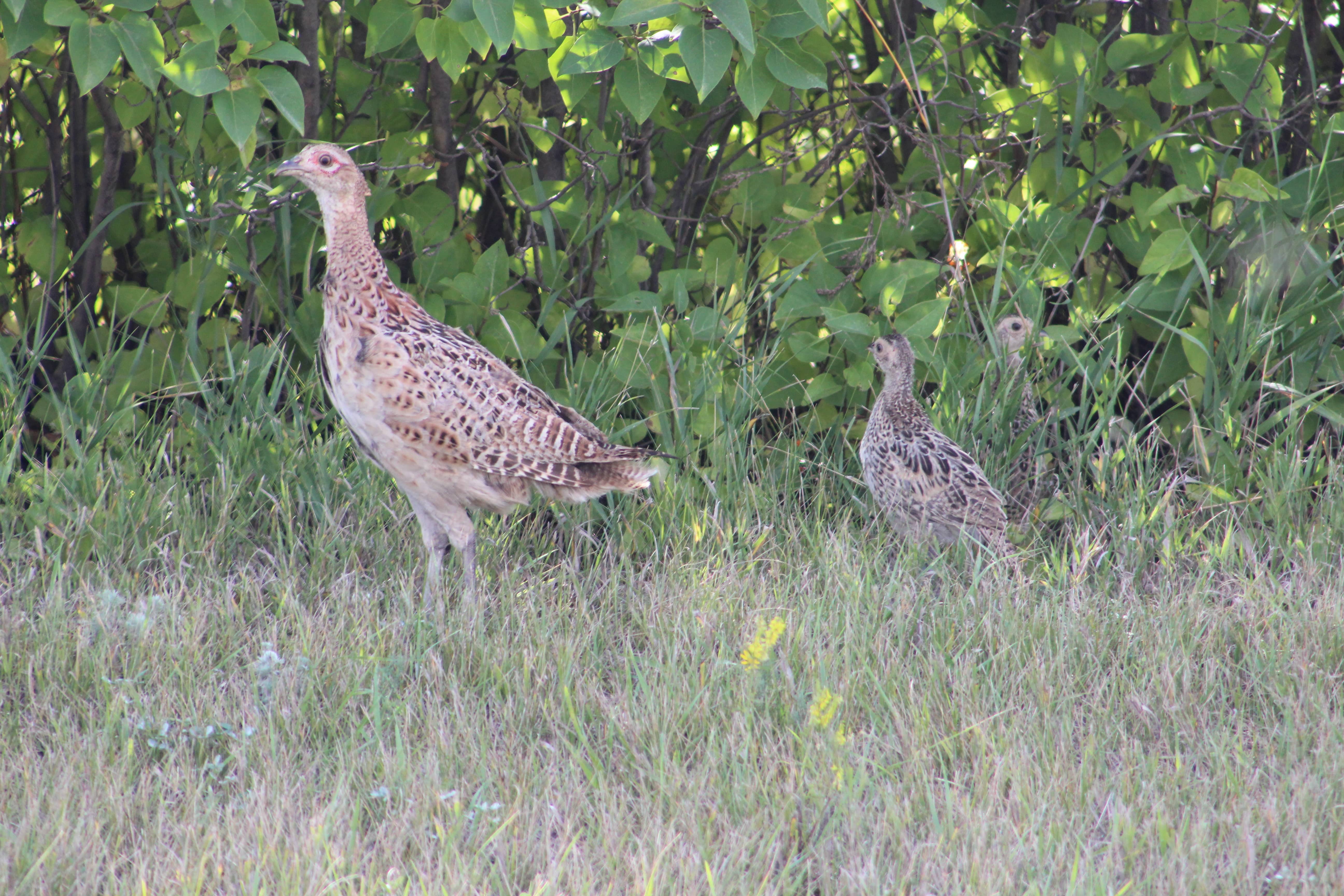
Pheasants can re-nest multiple times in a spring and summer stretch, resulting in broods of varying sizes. This season, with the lack of cover early, first attempts at nesting may have failed due to exposure and predation, but with the spring’s moisture and recent grass growth, later hatches should be more successful. Simonson Photo.
By Nick Simonson
This spring’s decrease in crowing counts for rooster pheasants was not unexpected according to North Dakota Game & Fish Department Upland Game Biologist RJ Gross. And while the statewide decrease of 22 percent year-over-year of roosters heard marking their territories in the early morning hours on the countryside seems large, he points to the fact that in terms of actual numbers, the decrease isn’t as significant. Additionally, with the spring’s moisture and habitat projects hitting the ground along with plenty of funding, he is optimistic for a good hatch this spring and a rebound for pheasants and other upland game in both the near- and mid-term
“Sometimes I don’t like presenting numbers in percentages because 22 percent even sounds big. We’re looking at the number of crows heard per stop. So last year it was 14 and this year it’s 11, well, that’s 20 percent. It’s not a huge decrease, but it is a decrease, and we did expect that. Everyone can remember that last year probably over half of the state was in exceptional drought, which is about as bad as it can get,” Gross relates of the anticipated results, noting a larger drop to 14 crows per stop this year from 19 in 2021 in the state’s southwestern region.
The drought of 2021 greatly impacted the growth of vegetation on the landscape, and the remaining areas of conservation reserve program (CRP) acres and other idled lands did not fair well, and those that did have some growth were often hayed or grazed, further reducing their carrying capacity of those acres for pheasants. In turn, the lack of moisture and lack of cover resulted in a decrease in insect forage necessary to sustain hatching chicks and help them grow their adult feathers. As a result, fewer young birds were recruited into the pheasant population than normal, with hunter-harvested wing samples from 2021 showing a roughly two-to-one ratio of last year’s young birds to those that had been around a year or more.
This spring, it is a different situation and rapidly growing grass on the landscape and plenty of insect forage is available. While carryover cover in the form of last year’s dried grasses was limited and may have left many first nesting attempts exposed to predators and the elements, new grass growth is beneficial to any later attempts and in protecting pheasant chicks from the eyes of predators. The only area where the moisture may be a concern is in southeastern North Dakota, where most pothole sloughs are flooded into surrounding upland areas. If unsuccessful in their first attempt to nest and get chicks to hatch, hens will re-nest multiple times, sometimes into August. As the attempts increase, however the numbers of eggs in each nest will decrease, generally from 12 to eight to six, on the average over three tries.
“[Habitat] is good right now, I’m worried that its going to be a little too late, because when the pheasants probably started nesting the habitat wasn’t that good from the residual effects of the drought. With the snowstorm and all the timely rains, that grass is three feet tall when you’re out there now. Peak hatch is mid-June and we’ve had some people that have reported broods and some good broods,” Gross reports.
Additionally, the NDG&F’s launch of the Meadowlark Initiative, a program designed to protect and sustain prairie habitats and keep idled lands available for wildlife provides some hope that even with expiring CRP contracts rolling across the state, there will be those operators who find the program enticing from both a financial and ecological standpoint. In turn, these preserved acres will help sustain grassland wildlife, including upland birds like pheasants and grouse, providing more places for them to nest and rear their young, and help boost successful spring hatches. Further, Pittman-Robertson dollars coming into the state from federal excise taxes the sale of firearms, ammunition, and other hunting-related products have swelled in recent years, giving the agency funding to further conservation efforts and hunting access.
“The Meadowlark Initiative that we have started and partnered with other agencies, that’s probably our best hope right now, focusing on protecting those native grasslands and trying to get more on the landscape. Another good thing is P-R dollars – which is where wildlife agencies get their funding from – that’s almost at an all-time high. The money is out there, and our big focus is saving that CRP that’s coming out that didn’t get re-enrolled in the program; we’re trying to get that back into our program,” Gross concludes.
In a few short weeks, Gross and other agents of the NDG&F will see if his hope for a rebound is confirmed as summer roadside brood surveys are conducted from July 20 through the end of August. On the same historical routes used for the crowing counts, surveyors look for adult and juvenile upland birds – pheasants, grouse and partridge – and take a tally of brood numbers, sizes, gender and other aspects for the report which is typically issued in early September, giving hunters greater insight into what they may find in the field when hunting seasons open. This year, the pheasant hunting season is slated to open on Oct. 8.
Simonson is the lead writer and editor of Dakota Edge Outdoors.
